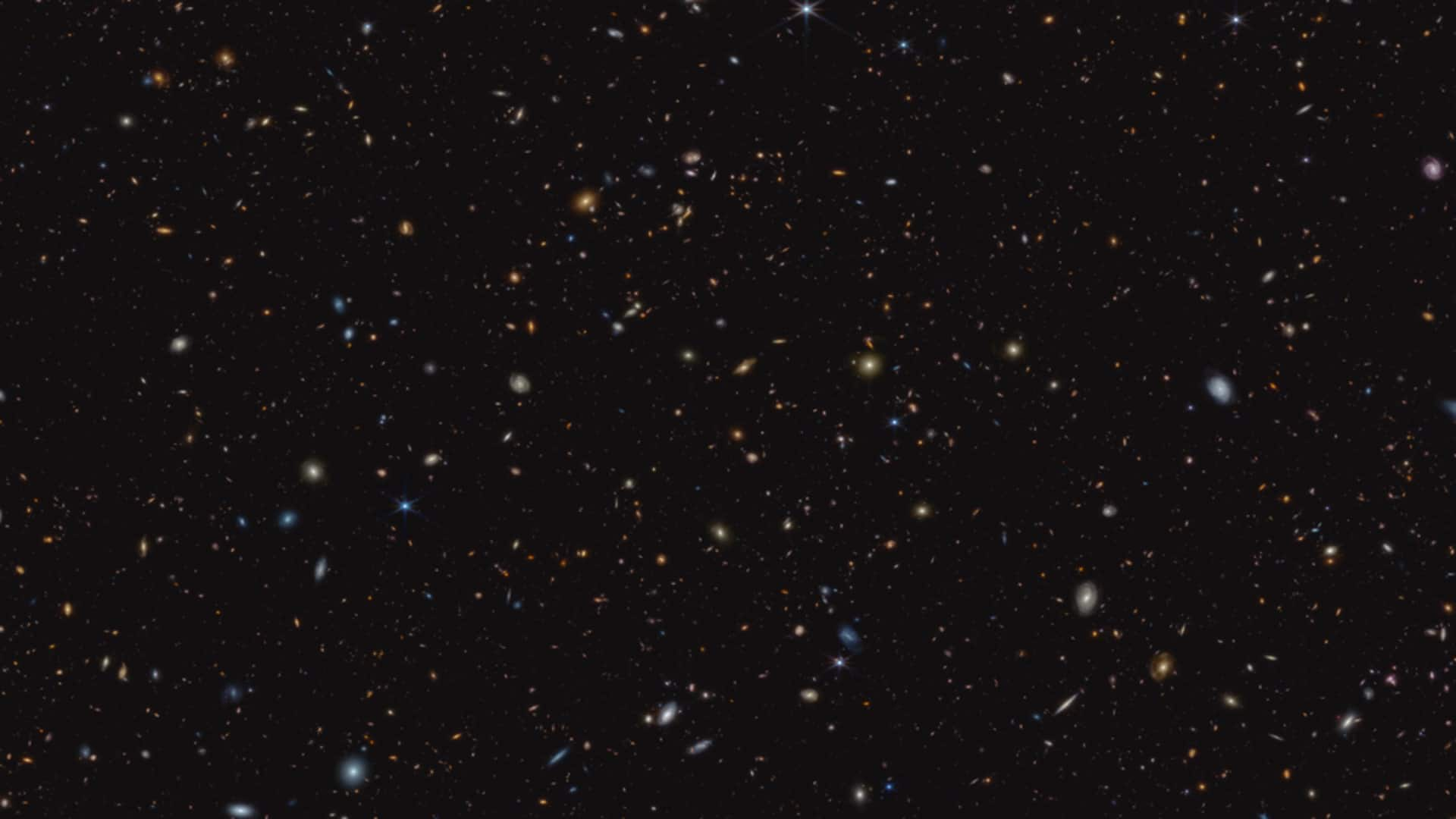
NASA's James Webb telescope captures 45,000 galaxies from early universe
What's the story
A new image from the James Webb Space Telescope shows galaxies that existed in the ancient universe, which formed only a couple of million years after the Big Bang. The telescope looked at a portion of the sky called GOODS-S, lying in the direction of the constellation Fornax. More than 45,000 galaxies, teeming with young stars, are seen in the latest Webb image.
Context
Why does this story matter?
The Webb telescope is touted to be the most powerful science observatory ever built. Estimated to have cost $10 billion, the telescope is inching toward completing its first year of science operations in space. Webb is equipped to see in infrared wavelengths of light, allowing it to look deeper into space than any of its predecessors.
Detail
Galaxies are seen as they were during 'Epoch of Reionization'
The sparkling galaxies seen in the GOODS-S region belong to a period in the universe's history called the 'Epoch of Reionization' when the first galaxies and stars began to take shape. The latest Webb image shows galaxies as they were when the universe was less than 600 million years old. For reference, the universe is estimated to be about 14 billion years old now.
Stars
'These early galaxies were good at creating hot, massive stars'
The Webb image also reveals that the galaxies were filled with a "multitude of young, hot stars." "Almost every single galaxy that we are finding shows these unusually strong emission line signatures indicating intense recent star formation. These early galaxies were very good at creating hot, massive stars," said Ryan Endsley, from the University of Texas at Austin, who led the investigation.
Process
These stars played a role in reionization of the universe
These "hot, massive stars" emitted radiation which contributed to the reionization of the universe. The investigation is a part of the JWST Advanced Deep Extragalactic Survey, or JADES program. One of the objectives of this program is to "uncover and characterize faint, distant galaxies." So far, JADES has discovered hundreds of galaxies that existed when the universe was less than 600 million years old.
Redshift
How do astronomers determine how far the galaxy is?
Light from distant galaxies is stretched to longer wavelengths and appears redder due to a phenomenon called redshift. Measuring redshift lets astronomers determine how old and how far the galaxy lies. "Before Webb, there were only a few dozen galaxies observed above a redshift of 8 but JADES has now uncovered nearly a thousand of these extremely distant galaxies," said NASA.